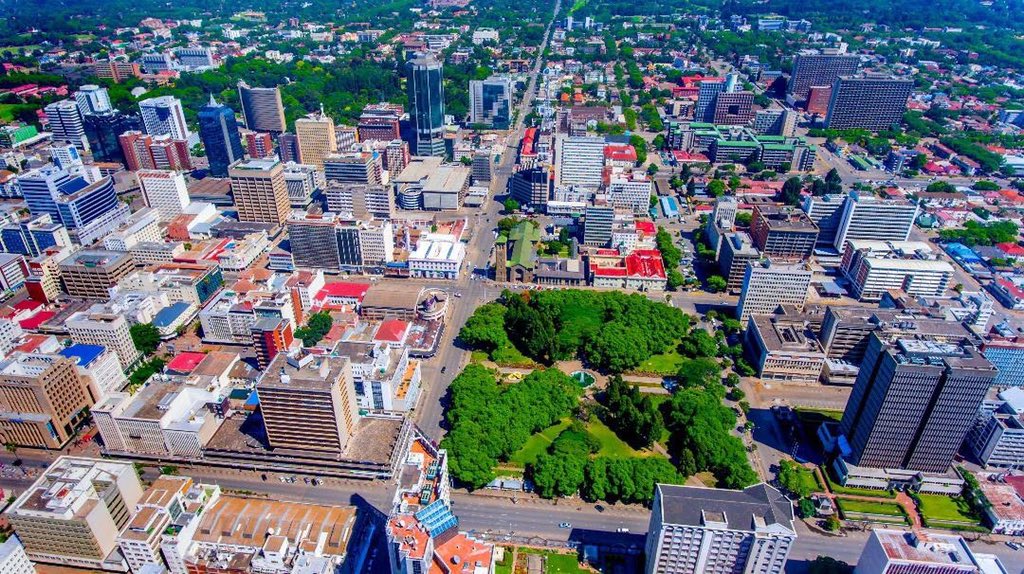HARARE'S central business district (CBD) should be reconstructed in line with modern trends to meet challenges of the digital and globalising trade relations, real estate experts have said.
Identified as one of the country's prime real estate locations, the Harare CBD has remained rooted in the past due to lack of investments in the past few years when the country endured macro-economic challenges.
The city centre is currently characterised by informal trade on the street pavements and roadways, congestion, illegal public transportation, uncleanliness dilapidating infrastructure and water shortages among other things.
This has resulted in most established and new companies moving their operations and head offices out of the CBD to surrounding suburbs.
Knight Frank Zimbabwe's senior partner, Amos Mazarire, said with occupancy rates dropping to 50 percent of available space, a strategy for the redevelopment of the CBD is an economic priority.
However, for him the successful development of the CBD is a long-term strategy, which will require new ideas and strategies.
"It is inconceivable that, in the short to medium-term, the vacant space will be taken up for its original use. Therefore, pension funds should be considering alternative uses, that is, student accommodation and other residential purposes," he said at The 2018 ZimReal Property Investment Forum in Harare last week.
"Already, there has been an increase in above ground level accommodation being converted to retail use."
The conversion to student accommodation and other residential uses may, however, prove to be prohibitively expensive and of limited use and demands due to the high vacancy rates if planning is amended.
Gibson Mapfidza, the general manager of Fidelity Life Assurance of Zimbabwe, agreed with Mazarire and added that the building infrastructure design is equally old and, as a result, inefficient for the space users.
"For instance, most of our buildings, designed and built in the 70s, 80s and 90s have the old solid floors making it difficult to route data and data cables. These buildings were designed in the pre-information and communication technology (ICT) era. They also do not have the modern ceiling voids - for heating, ventilating and air conditioning (HVAC) installation and other intelligent buildings accessories," he said.
Mapfidza, who spent five years working on the CDB revitalisation through Old Mutual and completed his Masters Degree research on the city centre through the UK's Reading University, said as a consequence of the dynamics and influence of great technological progress, urban economic spaces are becoming increasingly flexible spaces.
"Because of age and redundant equipment - central HVAC systems, lifts and escalators - most buildings within the CBD are chewing above normal energy consumption. Benchmarking would help identify all these buildings and ensure that a plan is put in place for the respective property owners to rectify.
"This move will address twin objectives of sustainability in the built environment and lure back tenants to the CBD, if building operating costs, viewed in the CBD as to high, are lowered and optimised," he added.
Inocencia Tigere, one of Zimbabwe's town planning advisors, said there is an urgent need to review dated planning regulation regarding the development of the CBD.
"Our governing plan is from the late 1990s. We need to look at mixed-uses and take inspiration from China and South Africa," she said.
A step supported by Mazarire who said: "Perhaps lessons could be learnt from efforts being made in cities like Johannesburg to re-package the cities and bring them to their former glory."
- fingaz
 Concern over Masvingo black market
Concern over Masvingo black market  Kenya declares three days of mourning for Mugabe
Kenya declares three days of mourning for Mugabe  UK's Boris Johnson quits over Brexit stretegy
UK's Boris Johnson quits over Brexit stretegy  SecZim licences VFEX
SecZim licences VFEX  Zimbabwe abandons debt relief initiative
Zimbabwe abandons debt relief initiative  European Investment Bank warms up to Zimbabwe
European Investment Bank warms up to Zimbabwe  Young Investment Professional (YIP) Graduate Programme 2019
Young Investment Professional (YIP) Graduate Programme 2019 











 Young Investment Professional (YIP) Graduate Programme 2019
Young Investment Professional (YIP) Graduate Programme 2019
Editor's Pick